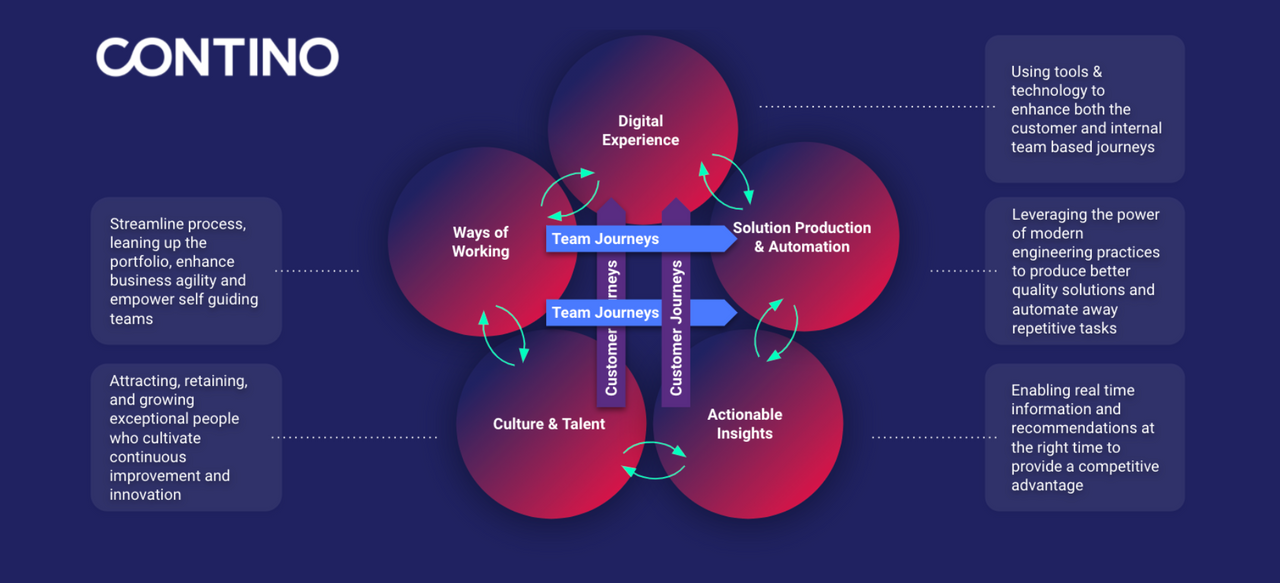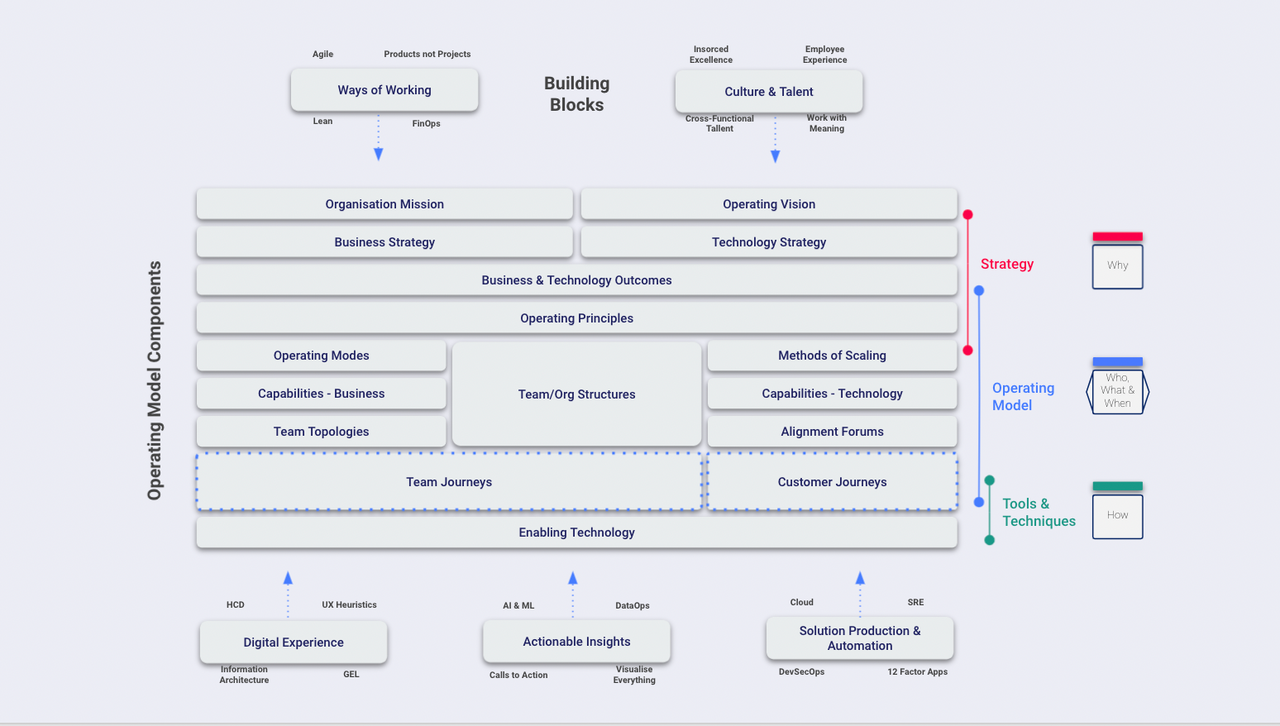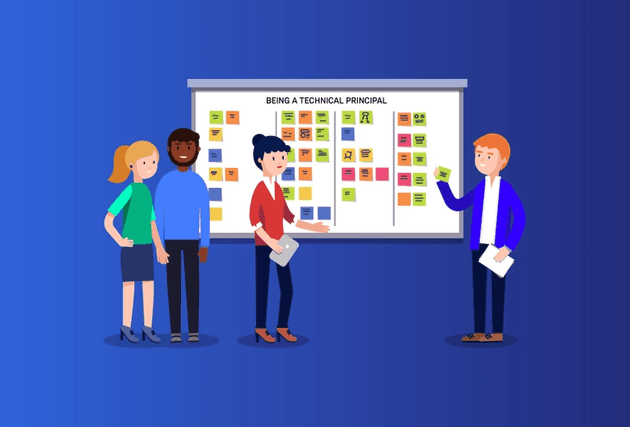Operating Models: The Key to Unlocking an Enterprise’s Digital Transformation
To remain relevant and provide customers and the market with what they need, organisations need to embrace change. Embracing a modern operating model can enable organisations to successfully evolve themselves into a highly resilient organisation, one which is agile enough to pivot quickly in response to forever changing consumer needs and new market landscapes.
In this article, we’re going to explore the key to unlocking an enterprise’s digital transformation through the use of agile operating models.
What Is An Operating Model?
An operating model is a blueprint that shows an organisation who is doing what, and when, to both create and deliver value - at a level of detail that balances consistency without stifling innovation. It has elements that affect Strategy (your Why), it also eventually intersects with Tools & Techniques (your How), but again that blueprints sits in the middle effectively being the bridge between strategic intent and the day to day activities. Given its prime place in an organisation it is also a powerful mechanism of execution and change.
How Can Operating Models Help Organisations Be More Resilient?
Embracing change is at the core to any successful digital transformation journey. Across all industries, enterprises should be paying close attention to the disruptions taking place in the market, and also the potential for improvement within the business itself. Partnering with an external expert, recruiting the right people, embracing disruptive technology and evolving cultural DNA will be key to ‘shifting the dials’ in the right direction.
The key to tackling your digital transformation journey is starting with a self-sustaining operating model which empowers people, optimises processes and enables technology to create a truly resilient organisation.
By thinking about operating models as the key to unlocking a company's digital destiny, we need to rethink how we structure them using these three approaches:
1. End-to-End Accountability Teams
Our people need to be organised into small, nimble and long lived cross functional ‘outcome’ based teams, who own and have end-to-end accountability for the customer or team based solution they steward.
2. Process as Internal Journeys
Processes require realignment to fulfill specific internal facing and customer facing journeys, with all journeys sharing the same outcome based KPIs to maximise output and drive continuous improvement.
3. Tools & Techniques Born Digital Native in the Cloud
Finally, both our journeys and teams are enabled by best-in-breed cloud based digital technology that is modular and easily changeable as newer options become available over time. Traditional long lived, and capex based, technology agreements that lock you into specific capabilities are an anti-pattern that can destroy competitive advantages and hinder innovative teams.
While the above three approaches are key, an extra key ingredient is structuring your operating model using a series of loosely coupled yet tightly integrated components. Every component linking together in a way to enhance the efficiency and effectiveness (aka flow) of value-streams while simultaneously providing superior experiences for customers and teams. These components are best utilised in the form of modular building blocks which pull from the latest schools of thought, tooling, and techniques in’ Ways of Working’,’ Digital Experience’, ‘Solution Production & Automation’, ‘Actionable Insight’, and ‘Culture & Talent’.
Over time it's inevitable that newer building blocks will be added, existing ones will grow, and some may be made redundant altogether. As these changes naturally occur they trickle their evolved elements from top to bottom in an organisation as their thought leadership influences strategy. Simultaneously, they also bubble from the bottom to top as tools and techniques take on new functionality to meet new paradigms, affecting how we perform our day-to-day duties. Since the operating model is also made from the same blocks, when these two influences converge in the middle, they organically effect and enhance the operating model itself thus playing a key part in making it self-sustaining and baking resiliency into the organisation’s DNA.
How Can Contino Help With Your Digital Transformation Journey?
Contino has developed a tried-and-tested framework for accelerating, de-risking and amplifying enterprise transformations. We call this our Momentum Framework. It is a five-step journeymap of data-driven good practice for measuring maturity, capability and business value. This framework allows organisations to prove success before scaling an initiative, demonstrating ROI first and developing the right foundations for a more successful digital transformation.
We pride ourselves on being an innovative, specialist engineering and people-first consultancy that really drives measurable outcomes for customers.
Operating Model Examples:
- Contino partnered with an Australian energy provider and assisted them to transform their ways of working, lead their transformation program, and evolve their technology profile using the latest AWS cloud capabilities across compete and storage platforms, serverless tech, and managed cloud.
- We engaged with a large Australian based retail group to help evolve its technology strategy, design new team structures, benchmark their maturity and craft a roadmap to help uplift their capabilities.
- Most recently we helped a major Australian insurance provider to define the value of cloud technology, implement a multi-mode operating model, and streamline areas of accountability across teams to maximise adoption.
The State of the Public Cloud in the Enterprise: Contino Research Report 2020
Why is the public cloud the greatest enabler in a generation?
We asked 250 IT decision-makers at enterprise companies about the state of the public cloud in their organisation.
All of these engagements utilised different components and building blocks from the same ‘self-sustaining’ operating model playbook, this is possible due to its componentised modularity.
We can pick and choose, and sometimes customise, elements to suit each customer to ensure the best version is implemented based on their domain, maturity and needed journey without compromising ‘good practice’ implementation. This is key as it allows change to be more organic and ultimately bolster the success of your digital transformation efforts.
If we use the last example of our insurance provider we can tell this story end-to-end. Firstly we evaluate, analyse and benchmark against our Operating Model Outcome based KPIs (the dials we want to move in the right direction); we effectively ‘Nurture’ the journey ahead. Next we work together to create a small series of lean canvas style artefacts of the transformation, this ‘Plan’ aligns the organisation and allows us to map, visualise and communicate what good looks like around people, processes and tools & techniques. We pick a specific set of test candidate areas to ‘Prove’ the vision we crafted together is correct. We re-architect a new value stream built around specific journeys, small end to end teams, and modern automated tech; then we execute.
Together we reduced adoption/uplift time from several months down to a few weeks, increased team engagement and confidence, and ultimately enabled their technology to be more resilient, compliant and nimble. This success creates a pull mechanism across the business, making it easier to ‘Scale’ the Transformation out of these people, process and tool and technique changes across the rest of the organisation.
Contino is not your typical cloud consultancy. We actually practice what we preach and have a unique way of working ourselves, one which has allowed us to grow incredibly quickly across all regions. Our operating model, which we call the squad model, is made of the same components that we advise and implement with our customers. A squad is a truly cross functional team, which comprises experts from all functional areas of the business to deliver holistic, transformative and measurable outcomes for our customers. Through the squad we are able to help our customers take full advantage of everything Contino has to offer, not just outstanding engineering and strategy capabilities but also skills and expertise from Talent and Recruiting support, right through to People, Operations, and Marketing coaching.
One final ingredient worth mentioning in our Digital Transformation secret source, and one our highly skilled engineers pride themselves on, is working alongside our customers to dual deliver and upskill them in new technologies. We work together and deliver side-by-side, upskilling teams from the very beginning of an engagement so clients are confident to take the reins when it’s time for us to step back. Success to us is that our customers don't need us anymore, that we have unshackled them from old school thoughts around BAU monotony, taught them how to be self-sufficient, and enabled them to reach for the extraordinary.
If you want to find out more about how we can help your business with its digital transformation through operating models, get in touch!









